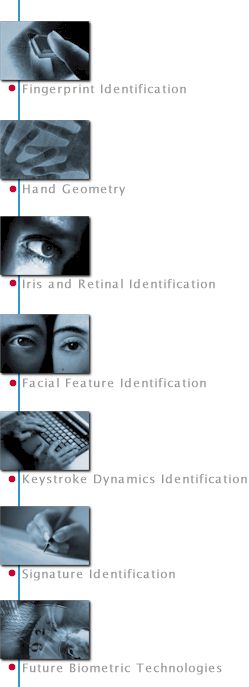
The basis for voice or speech identification technology was pioneered by Texas Instruments in the 1960's (Ruggles, T. 1998). Since that time, voice identification has undergone aggressive research and development to bring it into mainstream society. There are many advantages to using voice identification including:
There are different methods or processes in analyzing one's speech pattern but all voice identification systems are developed within a broader-based speech processing technology. There have been various leading companies including AT&T, ITT, France Telecom, Bellcore, Texas Instruments, and Siemens that have been actively involved in the development of verification algorithms for voice identification systems. A voice identification system, like other biometric technologies, requires that a "voice reference template" be constructed so that it can be compared against subsequent voice identifications. To construct the "reference template" an individual must speak a set phrase several times as the system builds the template. Voice identification systems incorporate several variables or parameters in the recognition of one's voice/speech pattern including pitch, dynamics, and waveform. A major concern for voice identification systems is how to account for the variations in one's voice each time a voice identification occurs. The rate and pitch at which an individual speaks at one moment is not always the same as the next moment in time. To help eliminate these type of variations during voice identification, a process comprising Hidden Markov Modeling is applied. The basis of this approach is that the system (software) uses language models to determine how many different words are likely to follow a particular word. The realized advantage here is that groups words (matching word pools) that sound alike, for example "to", "two", and "too", are drastically reduced and actual words are recognized. Error rates that use this type of language modeling are from one to 15 percent (Ruggles, T. 1998). There are five specific forms of voice identification technologies that are currently available or under development:
There are two application methodologies associated with the use of voice identification applications: dedicated hardware and software at the point of access and the dial-up of a PC host using regular phones.
Most applications of voice identification today fall under the industries of call-answering and contact-management services. Other markets that voice verification has penetrated recently include medium-security access control and time and attendance monitoring. "Live" applications include:
Voice identification technology is still slow to take off in many markets. One reason is voice identification is not as accurate as other biometric technologies. For instance, they tend to have a high false reject rate because of background noise and other variables. This type of disadvantage makes for an insecure system which can alienate it from large markets such as the financial industry and the government operations. However, voice identification technology continues to grow and improve. In the future, voice identification will not only be used for text dictation but to open applications and control predetermined commands. It has also been estimated that if voice identification technology continues to progress as it has, keyboards will become obsolete in ten years. Microprocessor technology is also set to help voice recognition become more widespread. With the release of the Pentium III microprocessor by Intel, a new set of instructions enhancing speech recognition was encoded into the microprocessor. The new set of instructions will help with front-end audio processing and the throughput of the search algorithms invloved in pattern matching. The enhanced speech recognition instructions will also reduce error rates and response time (21st Century Eloquence, 1999). It is estimated that revenues from voice/speech identification systems and the telephony equipment and services sold in the United States will increase from $356 million in 1997 to $22.6 billion in 2003 (Smith, L. B. 1998).
|
